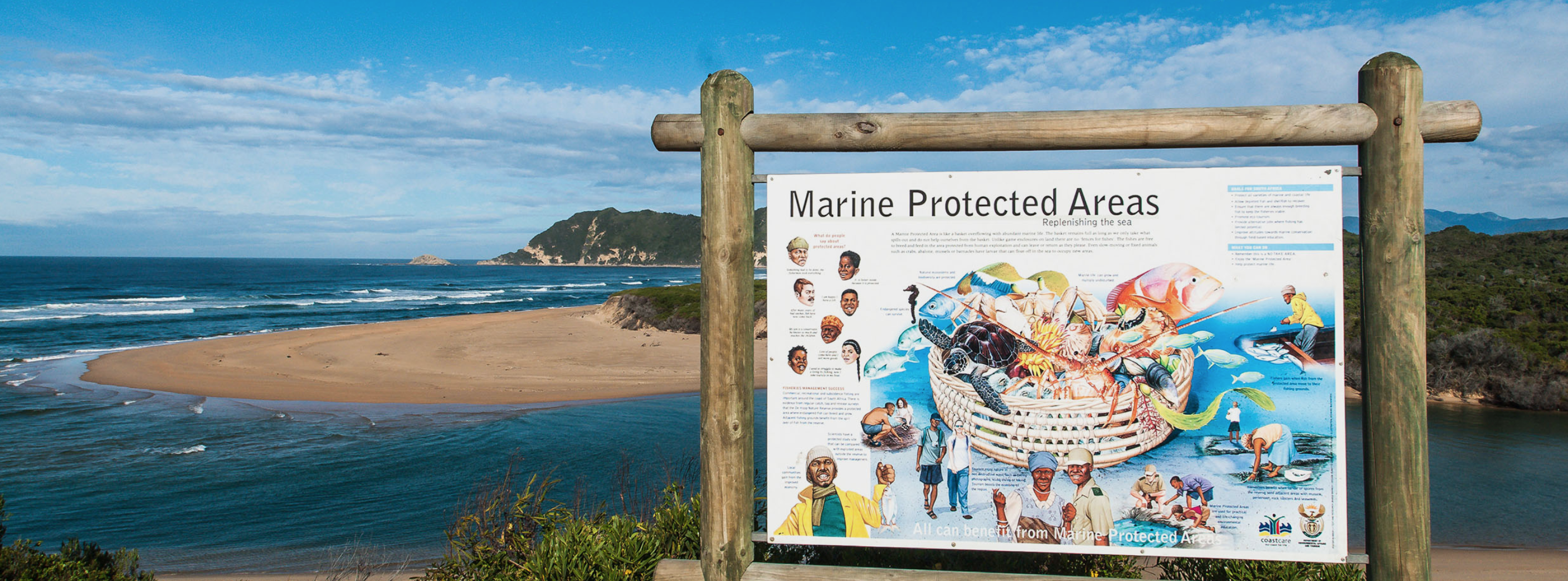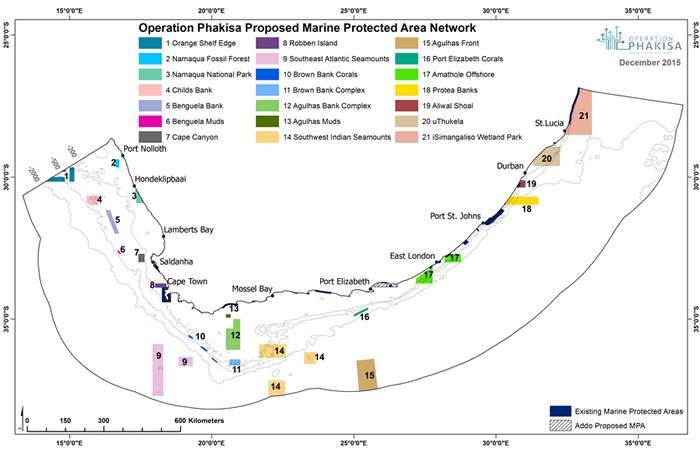
20 New Marine Protected Areas Proclaimed in South Africa
A Marine Protected Area (MPA) is an area of coastline or ocean that is specially protected for the benefit of people and nature.
Discover how to be a Great White Shark research Intern in South Africa

MARINE PROTECTED AREAS
MPAs help manage part of the marine environment to promote fisheries sustainability, keep marine ecosystems working properly, and protect the range of species living there, helping people to benefit from the ocean. In South Africa, MPAs are now declared through the National Environmental Management: Protected Areas Act.
The IUCN provides a global definition of MPAs and notes that an area needs to meet the IUCN protected area definition to qualify and be recognised as an MPA :
“A clearly defined geographical space, recognised, dedicated, and managed, through legal or other effective means, to achieve the long-term conservation of nature with associated ecosystem services and cultural values”
GLOBAL
Global estimates of how much of the ocean is protected range between 1 and 7 % because there are many types of protected areas and different governments and organisations see protection differently. Despite these differences, countries agree that more ocean protection is needed. National waters represent 39% of the global ocean and currently about 17% of these waters are designated as protected areas. Additional protection in the high seas (Areas Beyond National Jurisdiction) is challenging but new work is underway to help increase overall ocean protection levels by increasing protection in this 40% of the planet which covers 64% of the total ocean area.
IN SOUTH AFRICA
South Africa protects its terrestrial natural heritage through a network of protected areas that are spread across the country to protect different ecosystems and biomes, Kruger National Park for instance. These areas are national treasures, where we and our children, and our great grandchildren, can explore and experience the wonders of nature. About 8% of our land is protected whereas less than half a percent of the ocean around South Africa is protected. South Africa has a rich heritage of coastal and ocean ecosystems. While our land-based heritage is relatively well protected through various national parks and other declared protected areas, many important marine areas are not yet protected. However, this is changing as the Department of Environmental Affairs is in the process of declaring new Marine Protected Areas. These MPAs will not only protect our ocean heritage for future generations but support fisheries sustainability, climate adaptation and tourism.
Prior to 2018, South Africa had 25 formally declared MPAs including 23 permanent coastal MPAs, one seasonal MPA (Walker Bay Whale Sanctuary) and the very large Prince Edward Island MPA in our southern Ocean territory. The PEI MPA covers about 30% of our southern ocean territory representing more than 80% of the different ecosystem types found there. However, very little of this territory excludes fishing for the Patagonian toothfish, a valuable resource in the sub-Antarctic. The 24 MPAs in the coastal waters around mainland South Africa cover 0.43% of the ocean area around South Africa and 0.16% is highly protected (no-take). The 2011 National Biodiversity Assessment found that offshore ecosystems are the least protected ecosystems across all realms i.e. land, rivers and wetlands, estuaries and marine (considering both inshore and offshore ecosystems). The Offshore MPA project (2007- 2011) laid the foundation for plans to protect offshore ecosystems and these were advanced towards implementation during Operation Phakisa Oceans Economy.
In October 2018, the South African government proclaimed 20 new MPAs that expanded the protection of South Africa’s oceans (not including PEI) to 5%. To meet the Ocean Economy and Sustainability Goals of the United Nations, South Africa must protect a further 5% of its oceans to reach the goal of 10% protection by 2020.

Download FREE eBook with 18 scholarships to fund your study abroad experience




 Let us know where we can send fundraising opportunities. In the meantime download our eBook featuring 18 scholarship awards for study-abroad adventures
Let us know where we can send fundraising opportunities. In the meantime download our eBook featuring 18 scholarship awards for study-abroad adventures  Let us know where we can send fundraising opportunities. In the meantime download 40 great fundraising ideas eBook right here
Let us know where we can send fundraising opportunities. In the meantime download 40 great fundraising ideas eBook right here  Let us know where we can send you more fundraising insights to help jump start your career as a marine scientist
Let us know where we can send you more fundraising insights to help jump start your career as a marine scientist